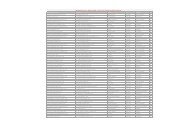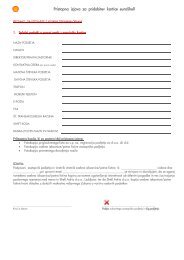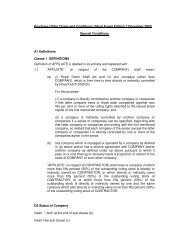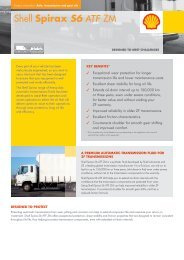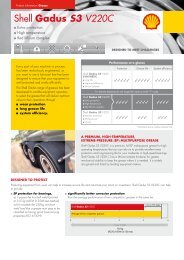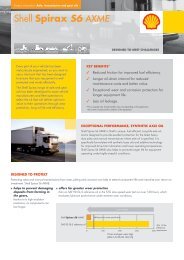OBEN GAS DEVELOPMENT PROJECT
OBEN GAS DEVELOPMENT PROJECT
OBEN GAS DEVELOPMENT PROJECT
Create successful ePaper yourself
Turn your PDF publications into a flip-book with our unique Google optimized e-Paper software.
Environmental Impact Assessment of <strong>OBEN</strong> <strong>GAS</strong> <strong>DEVELOPMENT</strong> <strong>PROJECT</strong><br />
FMENV COMMENTS UPDATE STATUS<br />
6. SOCIO-ECONOMIC COMMENTS ON THE ENVIRONMENTAL<br />
IMPACT ASSESSMENT (EIA) OF THE PROPOSED DOMESTIC<br />
<strong>GAS</strong> SUPPLY <strong>PROJECT</strong>/WEST AFRICA <strong>GAS</strong> PIPELINE BY<br />
SPDC<br />
I have gone through the draft EIA report<br />
on the proposed project with<br />
specific reference to the socio economic<br />
aspects. The socio-economic<br />
section provides an adequate overview of<br />
the study devout just a few<br />
pages to this important aspect. This an<br />
attempt by SPDC to follow the<br />
global paradigm shift to more emphasis<br />
on the social, economic and<br />
health impacts of development projects.<br />
However there are some specific<br />
gaps to be filled.<br />
Page 3-22. under political and socio-cultural history,<br />
it is stated that<br />
the geographic locations and some of the<br />
features of the host<br />
communities are shown in table 3.14. the<br />
table does not show the<br />
geographic features rather if presents the<br />
demographic structure.<br />
Also page 3-23, under demographic characteristics the<br />
1991<br />
population figures of these communities<br />
should have been presented<br />
and the figures projected to year 2006<br />
based on the population growth<br />
rates for such settlements.<br />
Page 3-23, figure<br />
3.4<br />
The sample size is very small for the<br />
required inference to be made<br />
does not show the 2005 projected<br />
population as stated in section 3.2.2, the<br />
figure presents the population distribution<br />
by age.<br />
In the figure 3.4, shows that there is no<br />
one between the age of 16-24<br />
in lkobi cross check this.<br />
Page 3-27. 3.3.6.3, personal incomes, the<br />
table 3.20 presents an<br />
income level that seems unrealistic and<br />
unlike what obtains in other<br />
parts of the Niger Delta. With over 60.9%<br />
Page 4 of 5<br />
Corrected. See Table 3.19, p 3-<br />
28<br />
Updated – see Table 3.19<br />
See table 3.19<br />
The lowest age evaluated is 21<br />
years<br />
Updated. See Table 3.26, Fig.<br />
3.6, pp 3-33, 3-34









